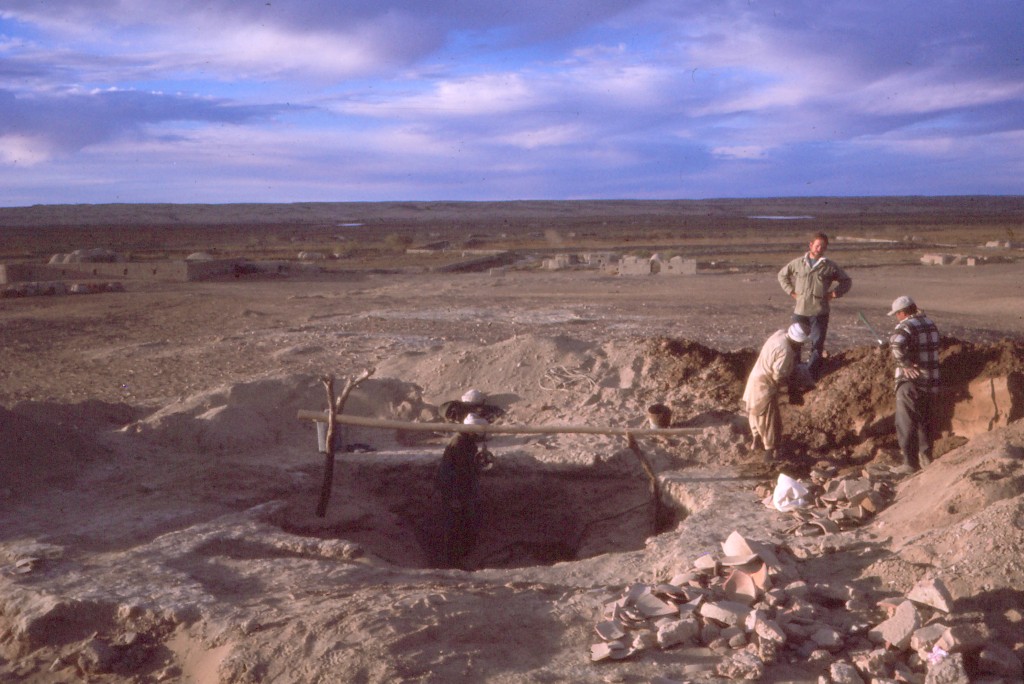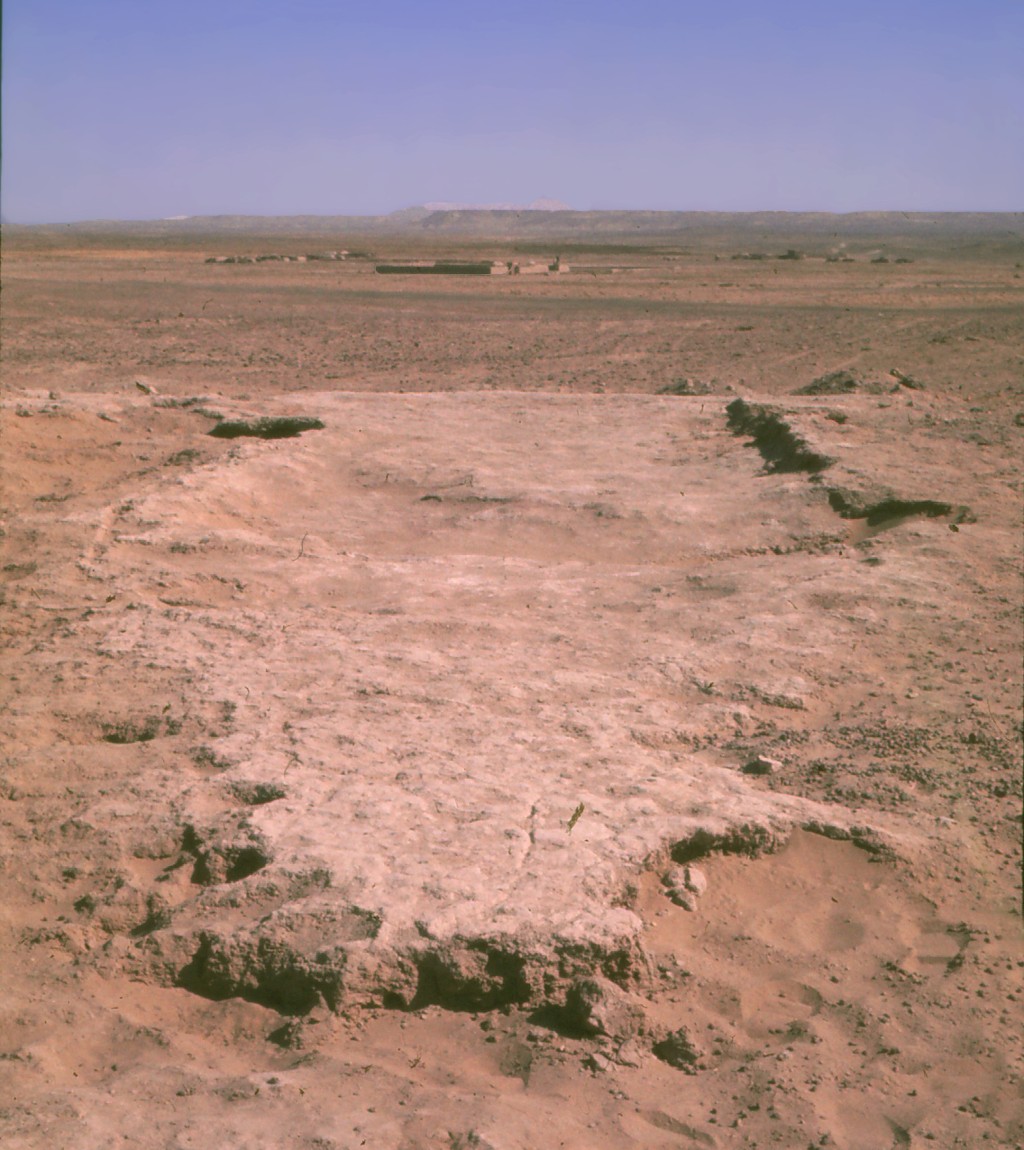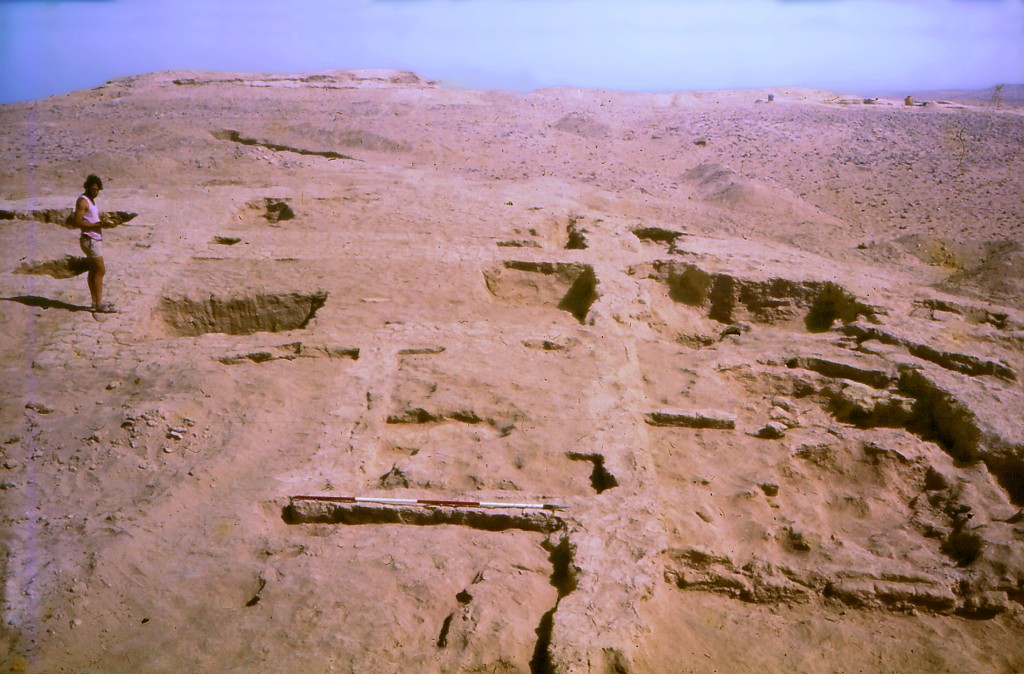Khwaja Ali Sehyaka/Sehyak
Latitude: 30.290889 Longitude: 63.177708
Enlarged satellite view
A Mesopotamian-style temple and an accompanying compound for occupation and storage sat on a low bluff south of the Helmand Valley near Daishu. Surveyed in 1971, we noted Greek-style architectural fragments and fine red pottery. We returned for 16 days of excavation in 1975. The site was badly eroded, often below floor levels, but we were able to reconstruct the basic plan of the shrine (Area D), a central cella with a porch and 4-column peristyle to the east. A domestic area (Area A) of at least 12 rooms spread on the slope to the west, a cluster of storage rooms or treasury (Area B) was located to the south. The platform foundation of another large structure (Area C) was located on the crest of the hill but too little remained to be able to reconstruct its plan. Remains of an enclosure wall surrounding the site were found lower on the mound. A well was discovered next to the temple in Area D and excavated over 15 m deep to the modern water table. It contained numerous unique artifacts, fine pottery, and pieces of column drums. Most valuable was a bilingual inscription on stone in Greek and Aramaic script that was once affixed to a wall of the structure. The site also contained numerous sherds with potter marks, quantities of fine red ring burnished pottery, and clay animal figurines. A cache buried in a room in Area B included a gold ring, a wax-coated polychrome sherd known only from the Mediterranean, an ostrich shell, stone beads, and a complete ceramic juglet. Carbon-14 samples led us to date this site to the Hellenistic or early Parthian period. After several periods of rebuilding, it was destroyed at the beginning of the Sasanian period in the 3rd century.

Near the Sehyak temple we discovered the well used by the occupants of the site. Excavation of the well to the water table 15 m below the surface produced column drums, large pieces of pottery, ceramics, clay figurines, and a unique bilingual inscription in Greek and Aramaic script.


A residential complex filled with domestic pottery accompanied the Sehyak temple, though some of the rooms were eroded below their original floor level.


